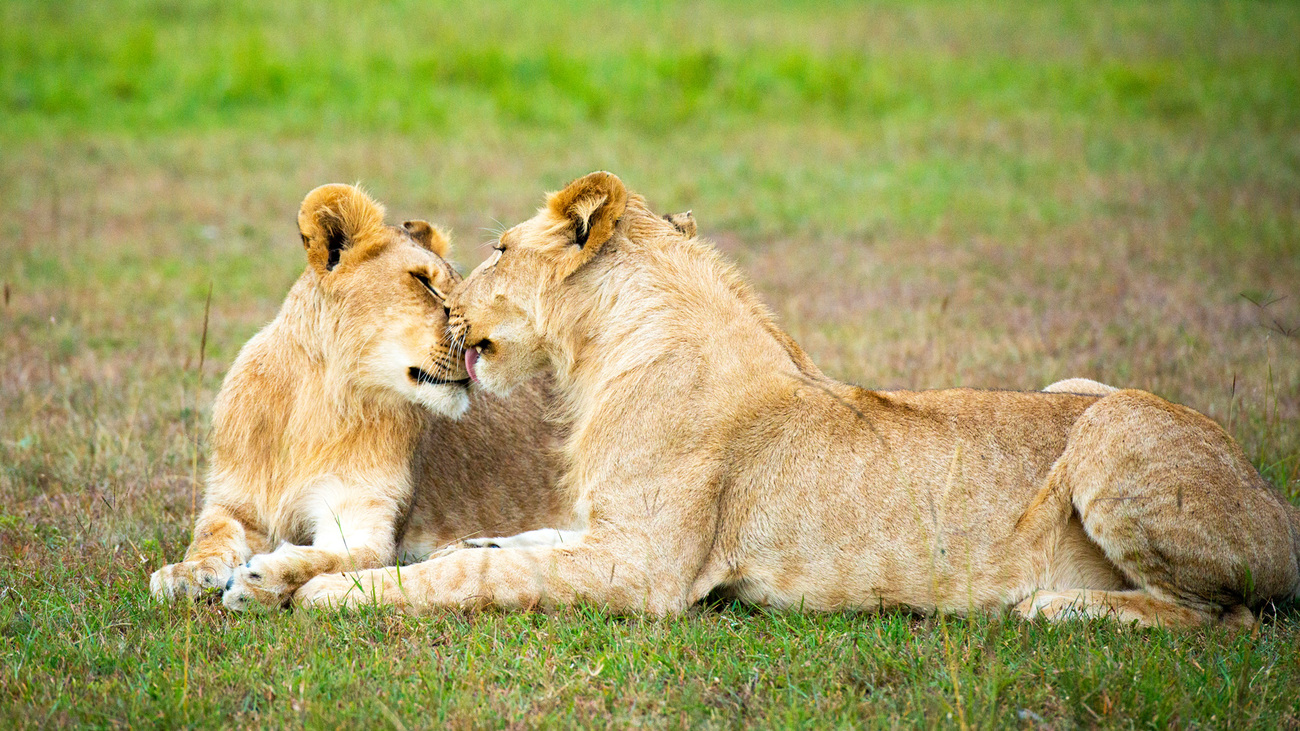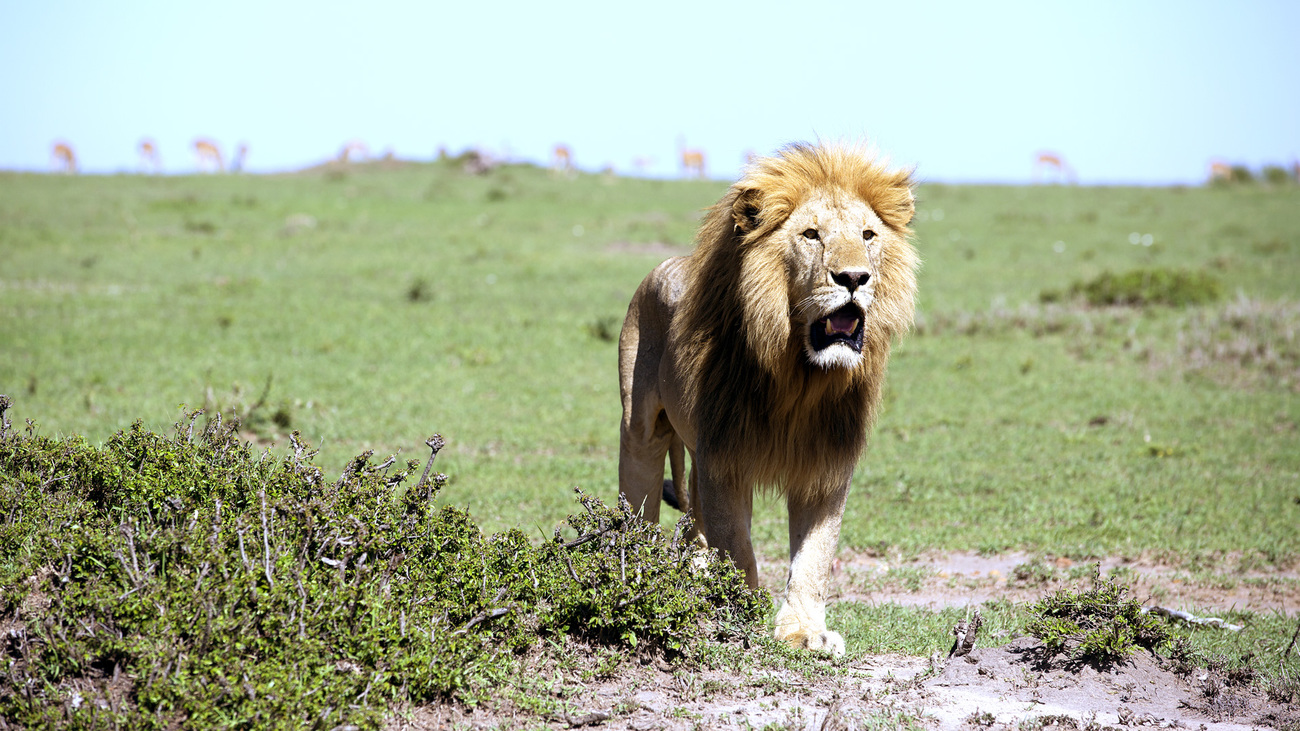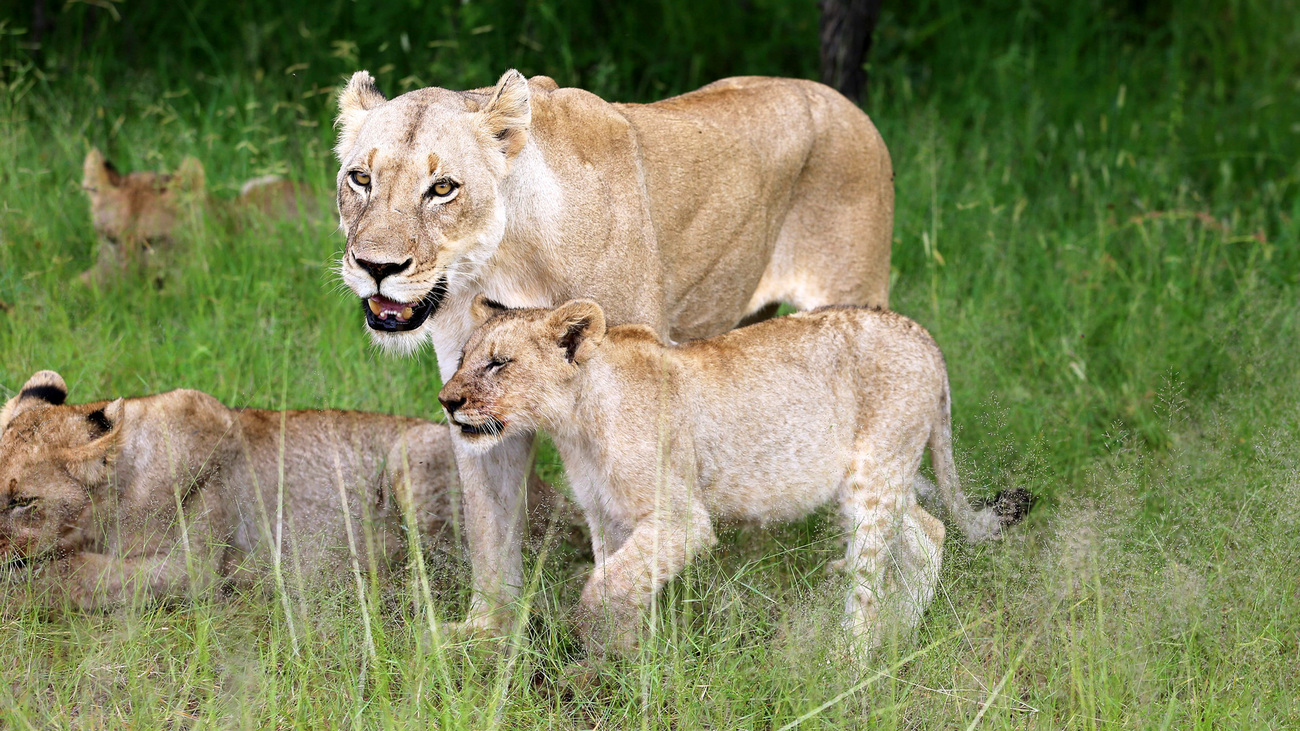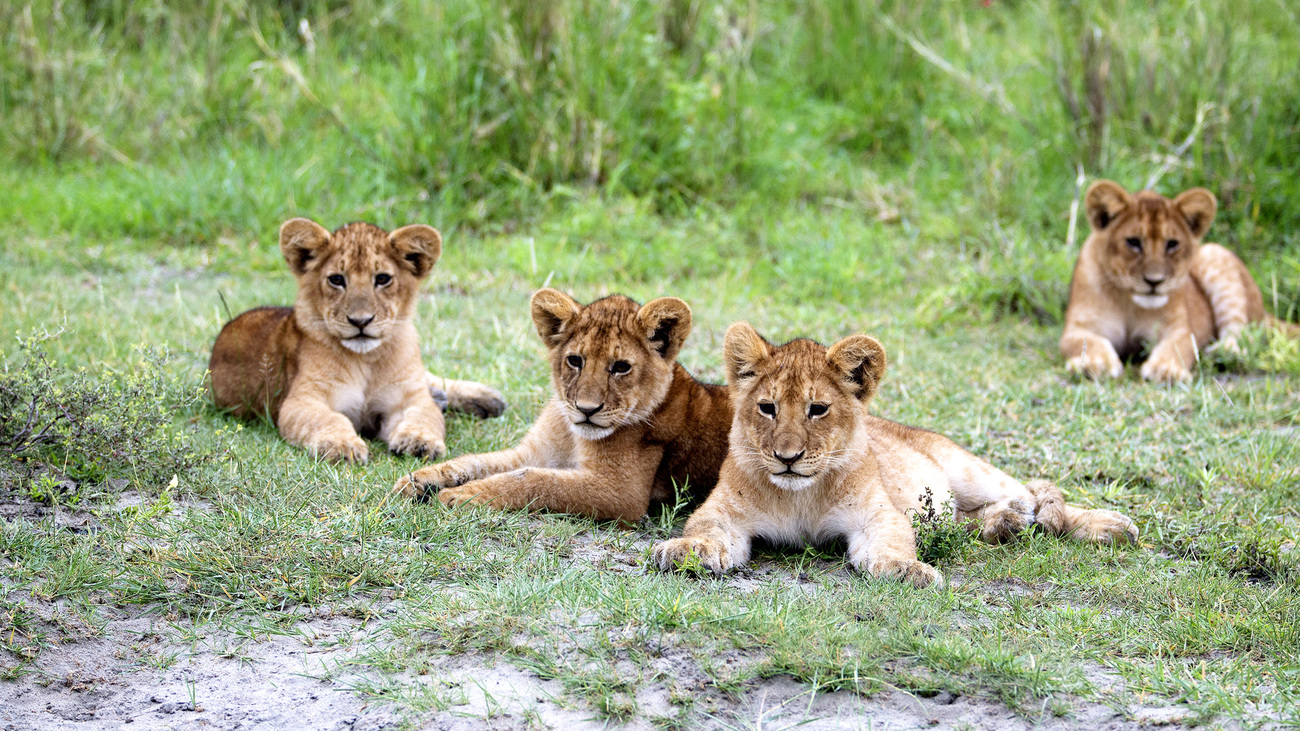10 fascinating facts about lions
10 fascinating facts about lions
IFAW is a rescue and conservation organization dedicated to protecting animals and their homes. Lions are among the many endangered species threatened by human activity, and we’re working to secure a better future for these big cats with the help of partners, governments, and communities.

In this article, we share our favourite fascinating facts about lions and why they need our help.
10 interesting facts about lions
From their powerful roars to their surprising tree-climbing abilities, lions are truly unique animals. Let’s jump right in to learn more lion facts.
1. A lion’s roar can be heard eight kilometers away
It’s called a roar for a reason. The loudest of all the big cats, a lion’s roar is so loud that it can be heard as far as eight kilometers (five miles) away. Its deafening roar reaches up to 114 decibels—louder than a chainsaw.
They’re able to roar so loudly thanks to their specialised larynx and vocal cords, which are square and flat, as opposed to the triangular shape found in other animals. Air passes more easily through their throat, resulting in a louder and deeper roar.
Lions use their roar to communicate with other members of their pride (even when they’re miles away), mark their territory, and intimidate any rivals or potential threats who may come too close.

2. Not all lions live in Africa
Lions are typically associated with Africa, but there’s actually a small population of lions living in Asia. Known as Asiatic lions and found primarily in India’s Gir Forest, this subspecies of lions are slightly smaller than their African counterparts and have a distinctive fold of skin running lengthwise along their bellies.
Asiatic lions live in dense forests rather than open savannahs and have adapted to this different environment. They tend to live in smaller prides, often consisting of only two or three females compared to the larger groups seen in Africa.
Asiatic lions once roamed across a vast range from the Middle East to India, but today, only about 350 remain in the wild, making them a critically endangered species. Conservation efforts in India have been crucial in protecting these lions, whose population has slowly been recovering.
3. Hundreds of lions are poached every year
Human persecution is one of the main reasons why lion populations have significantly declined in recent decades. Despite rules and regulations coming into place to protect lions, hundreds of lions are poached each year. Though hard to track—as a lot of poaching is done covertly—conservationists estimate about 600 lions are killed each year by humans.
This has devastating effects on not just lion populations, but also their environment and ecosystem as a whole. Lions help control the populations of herbivorous animals—like zebras and wildebeests—preventing overgrazing and ecosystem degradation. By preserving vegetation and the carbon it contains, lions also play a role in sequestering carbon and mitigating climate change.
4. Ugandan lions are excellent tree-climbers
We know cats love to climb trees, and lions are no exception—especially those in Uganda. While all lions are known to scale tree trunks and lounge on thick branches, the Ugandan lion is particularly good at it.
Lions in Uganda’s Queen Elizabeth National Park are regularly observed high up in the foliage of large fig trees and acacias, an impressive feat for a large cat that can weigh up to 230 kilograms (507 pounds). It’s believed that this behavior helps them escape from the heat radiating off the hot ground in the middle of the day, while also giving them a great vantage point to survey their territory and potential prey.

5. Lions used to live in Europe
It might be hard to believe, but scientists have found definitive proof that lion populations were once so extensive that they lived as far north as Europe.
The evidence shows that lived in southern Europe until around the fourth or third century BCE. The fact that there are so many references to lions in classical European literature, art, and other accounts hinted to the presence of European lions even before scientists uncovered fossils of the now-extinct animals.
Unlike the lions we know today, these ancient lions were adapted to the colder climates of the Ice Age. Fossils and cave paintings suggest that they were larger than modern lions, with a more robust build. They likely were hunted to extinction by humans.
6. Lions are born spotted
When lions are born, their coats are not the solid tan colour seen in adult lions. Instead, lion cubs are born with spots and rosettes, an interesting adaptation technique which helps these vulnerable young pride members blend into their surroundings and avoid predators. As the cubs grow older, the spots gradually fade, though some lions may retain faint spots on their legs or belly into adulthood.
Adult lions typically have a coat of short fur, which can vary greatly in colour, from buff yellow or orange-brown, to silvery grey or dark brown. Males often develop manes, ranging from light brown to black, and all lions have a tuft at the end of their tails which is darker than their coat.

7. Not all lions have manes
Manes may be an iconic feature of lions, but some lions are maneless—males and females. The presence or absence of a lion’s mane comes down to genetics and environmental adaptations. Stress, or a drop in testosterone levels, can cause an otherwise healthy male lion to lose its mane, just like hair loss in human men.
There is also a population of maneless male lions in Tsavo, Kenya, who never develop manes as they grow into adulthood. This is an evolutionary adaptation which makes them better suited to their environment. Some scientists believe that a mane is linked to climate and temperature regulation: a thick mane can reduce heat loss, so it is more necessary in cooler regions. An alternate school of thought proposes that Tsavo’s lions may have adapted to be maneless to help them navigate the thorny vegetation of the area.
8. Lions are the only cats to live in groups
Lions are unique among big cats because they are the only ones to live in social groups, called prides.
A pride typically consists of related females, their offspring, and a small number of adult males, usually brothers or close relatives, who help defend the group. The size of a pride can vary, ranging from a few lions to over 40 members, depending on the availability of resources.
Lionesses form the core of the group, are the primary hunters, and are responsible for raising the cubs. The males provide protection from external threats, such as other lions or predators like hyenas, and they also help secure and defend the pride’s territory.
Living in a pride gives lions several advantages, helping them retain their status as apex predators. They can hunt more efficiently in a group, taking down larger prey like buffalo or zebras that would be difficult to catch alone. A pride also protects the cubs and allows for shared responsibilities within the group.

9. Lions are victims of wildlife crime
Sadly, lions are often victims of wildlife crime and are poached by trophy hunters. A lion’s skin, teeth, bones, and claws are valued as ingredients in traditional medicine, making them lucrative in black market trade.
Lions’ body parts are sold for significant sums. Teeth and claws are often turned into jewelry and ornaments, while bones are ground into powders or used in tonics. This illegal trade not only threatens lion populations but also disrupts the ecosystems in which they play a crucial role. Conservation efforts are underway to combat this issue, but over 600 lions are still killed by hunters each year.
10. Lions only eat twice a week
On average, adult lionesses eat about five kilograms (11 pounds) of meat each day, while adult males need around eight kilograms (17.5 pounds) or more. However, they rarely eat every day. Instead, they will eat up to 50 kilograms (110 pounds) in one sitting, then hunt again three to four days later.
Lionesses hunt large herbivores like zebras and wildebeest, which can feed the whole pride, and occasionally feed on smaller animals like mice, birds, hares, and lizards. They ambush their prey and fan out in a semi-circle to increase the likelihood of catching it when it tries to escape. A lion’s vision is six times more sensitive to light than a human’s, making them excellent nocturnal hunters.

Want to help IFAW support lions and other animals around the world? Learn how you can get involved.
Related content
Our work can’t get done without you. Please give what you can to help animals thrive.